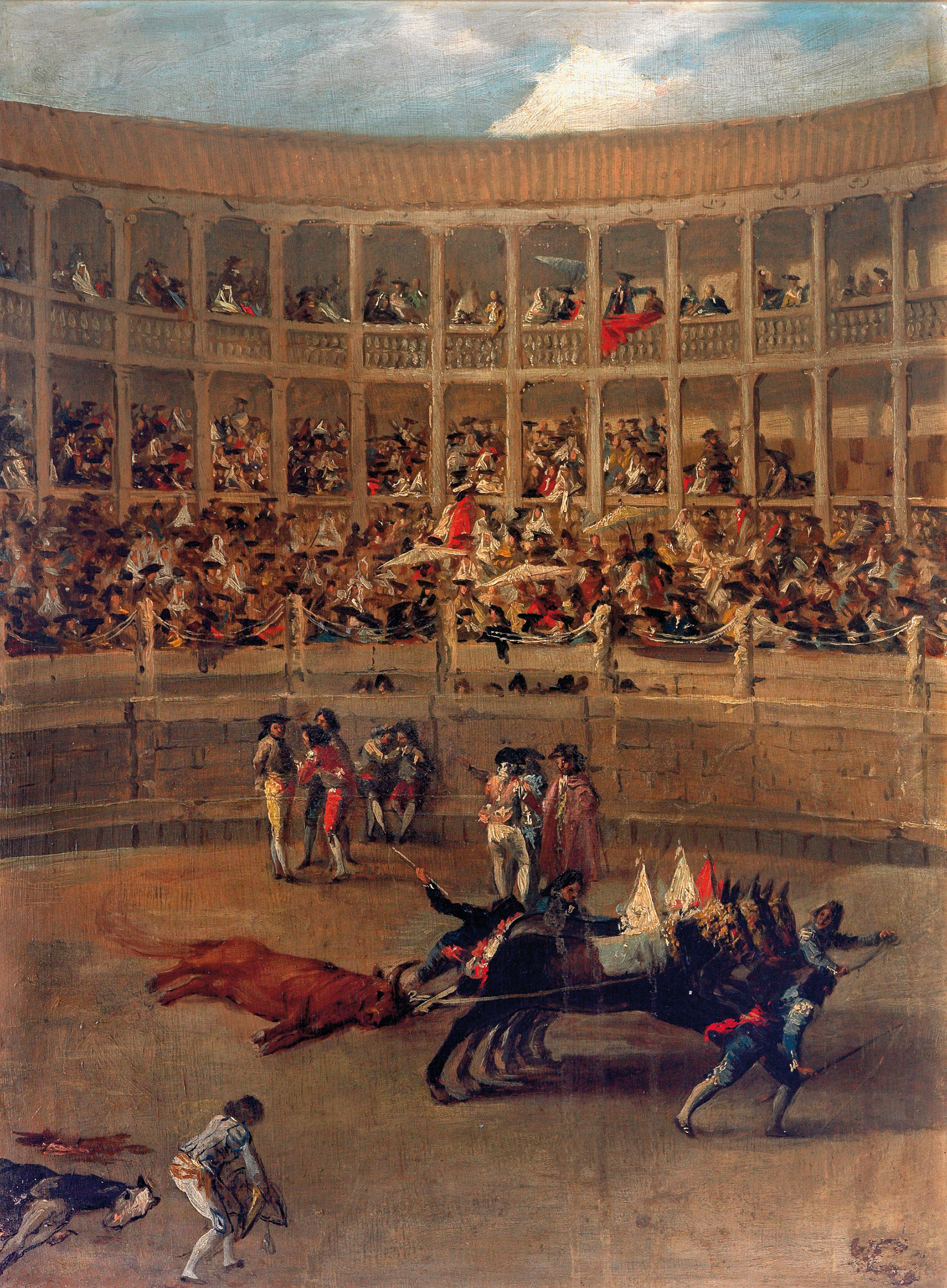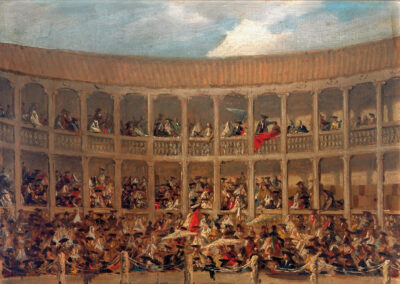This oil on tinplate is one of a series of eleven small-format paintings that Francisco de Goya sent to Bernardo de Iriarte, Vice-Protector of the Royal Academy of San Fernando, in January 1794, with a letter in which he justified their execution with these words:
"To occupy my mortified imagination in the consideration of my ills, and to compensate in part for the great expense it has caused me, I have devoted myself to painting a set of cabinet pictures, in which I have succeeded in making observations to which commissioned works do not regularly give rise, and in which caprice and invention have no scope."
A declaration of artistic principles that opened Goya's most original and richest period. They were all paintings on tinplate, a new medium that Goya used for the first time, depicting "various matters of national amusements", a set that we know from later letters that Goya enlarged to form a series of fourteen identified years ago by Xavier de Salas (1968, pp. 1-16).
Of the eight tauromaquias that made up the set, two passed into the collection of Ceán Bermúdez and six ended up in the collection of the Marquises of La Torrecilla, which was to give its name to the series, at an indeterminate moment in the 19th century. As such "Torrecilla series"was first exhibited in 1918 at the exhibition "....The art of bullfighting"and reproduced and published in 1923 in the catalogue of Goya's works published in Munich by August L. Mayer. Two years later, in 1925, on the death of the 8th Marquis de la Torrecilla, Andrés Avelino de Salabert, the series was divided among his three sisters, the eldest, Casilda Remigia, then widow of the 16th Duke of Medinaceli, being responsible for "Seath to kill" y "Dragging of the bull by the muleteers". Both works passed to his son, Luis Jesús Fernández de Córdoba, XVII Duke of Medinaceli, in whose will they were again divided, with the ".Bull dragging"It was given to his first-born daughter Victoria Eugenia Fernández de Córdoba, founder of the Fundación Casa Ducal de Medinaceli, the institution that acquired it in 2004.
This painting closes the series of bullfighting scenes by depicting the last scene of the bullfight, in which the richly dressed mulillas, adorned with red and white pennants and led by the mulilleros, remove the dead bull, while the bullfighters comment on the bullfight and a fighter removes the saddle of one of the picar horses that lies inert in the ring. The hustle and bustle of the crowd, who flee the sun by grouping together in the shade or opening parasols, is resolved with vibrant chromaticism of schematic and accurate brushstrokes. The architecture is depicted with similar sobriety, although numerous details, painted with simplicity and precision, make it possible to distinguish with certainty the Misericordia bullring in Saragossa, which Goya knew perfectly well and which served as the setting for most of the five bullfights in the Torrecilla series that take place inside a bullring (A. Ansón, 2014, pp. 123-4 and 201-215).


